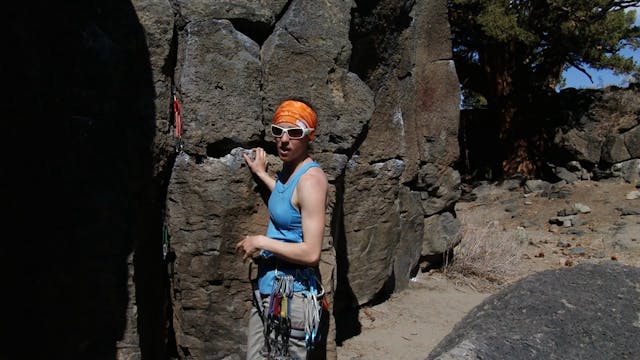Traditional Climbing: 12. Building Traditional Anchors - Part 2 of 2
Traditional Climbing
•
3m 6s
In this video we continue reviewing the fundamentals of building a traditional anchor system. In our last video, we covered Solid and Equalized, now let’s review the following:
Redundant -
Check each of the pieces in the anchor to determine whether a failure in one point can cause the entire anchor system to fail. A good anchor should have built-in “back ups” that ensure no single point failure results in the entire anchor failing.
Efficient -
Efficiency is especially important in multi-pitch trad climbing where you need to get up a long route before nightfall.
No Extension -
Ensure that if one of the pieces were to fail, the master point would not extend and shock load the anchor. A shock load creates tremendous forces and we want to avoid this type of load in any situation.
Important Note - Be sure to tie a figure eight or overhand knot to create the equalized master point. Not doing so could result in a failing of either the No Extension and/or the Redundant tests. See video above for demonstration on how this may occur.
So remember, always check to make sure your anchor is S.E.R.E.N.E!
We hope you found this video helpful. Feel free to comment below with questions or thoughts!
Please remember, climbing is inherently dangerous. Climb at your own risk.
Up Next in Traditional Climbing
-
Traditional Climbing: 13. Assessing T...
In this video we look at ways to assess rock quality for your traditional anchor. Consider two points:
1. Check to make sure the rock itself is solid by patting the rock with your hand. Listen for hollow sounds which might identify a detached block that is not visibly obvious. Avoid placing pr...
-
Traditional Climbing: 14. Alternative...
What happens if you run out of slings while leading a pitch and arrive at the anchor with only a few cams—then realize you also forgot to grab your partner’s cordelette when you swung leads at the last transition. Don’t worry, use your rope!
Step 1: Place 3 pieces of gear.
Step 2: Give your...
-
Traditional Climbing: 15. Alternative...
In this video we look at another way to build a traditional anchor in the event the climber has made it to the top of the route, has three pieces of gear to place, but does not have a cordelette or sling.
Step 1: Place your three pieces of gear.
Step 2: Give yourself a couple arms’ lengths ...


